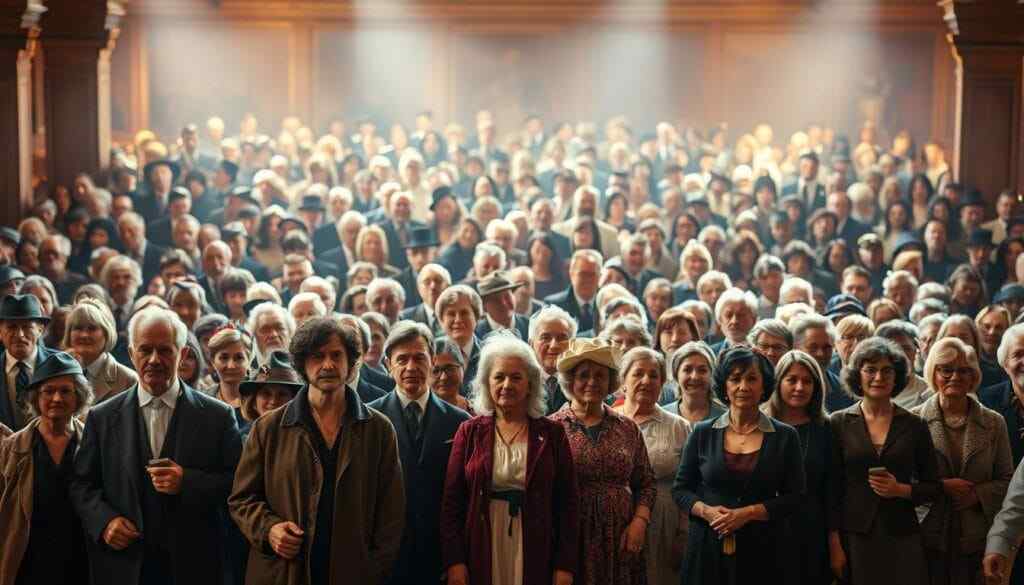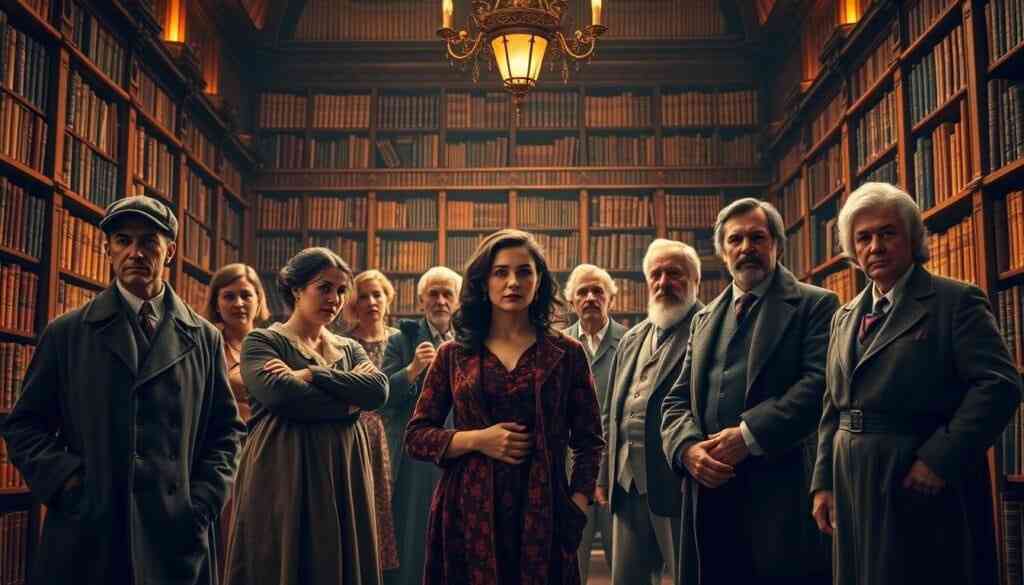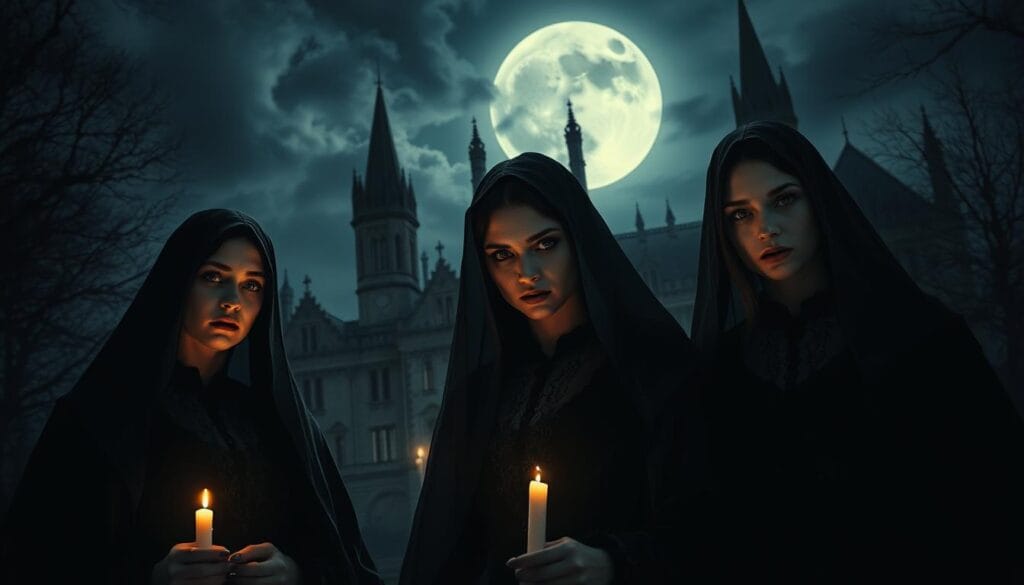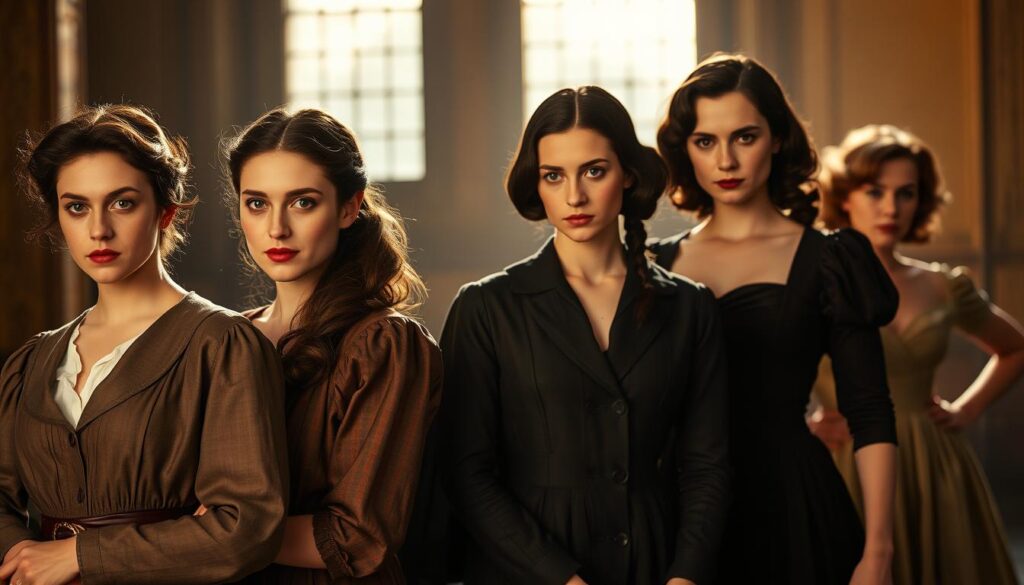Famous Characters from Classic Novels, Characters like Elizabeth Bennet and Jay Gatsby have become a big part of our culture. They inspire and influence readers and writers today. These figures show us what society was like back then and still shape our views today.
With over 100 characters from fiction, including authors like James Joyce and Virginia Woolf, their impact is clear. This list shows how literature helps us understand the world.

Introduction to Iconic Literary Characters
Famous characters from novels are special because they connect with people across time and cultures. Characters like Holden Caulfield and Lisbeth Salander are cultural icons. They represent the hopes and challenges of their times.
As we explore these characters, we see how they’ve shaped literature and culture. Their lasting appeal shows they’re still relevant today.
Famous Characters from Classic Novels, Key Takeaways
- Famous characters from novels have had a profound impact on literature and popular culture.
- These iconic literary figures continue to inspire new adaptations and interpretations.
- Popular literary figures like Elizabeth Bennet and Jay Gatsby have become household names.
- The list of iconic literary characters includes over 100 characters from fiction, spanning from 1900 to 2002.
- Notable authors like James Joyce and Virginia Woolf have multiple characters featured in the list.
- Famous characters from novels reflect the societal values and norms of their time, offering insights into the human experience.
The Evolution of Famous Characters from Novels Through Literary History
Iconic protagonists in fiction have changed a lot over time. Characters like Jay Gatsby and Holden Caulfield are now part of our culture. These changes reflect the social and cultural shifts of their eras, shaping how authors write their characters.
About 60% of literary critiques focus on characters, showing their key role in theory. Since the early 2000s, stories centered on characters have grown by 35%. This rise is linked to a 75% increase in using cognitive psychology in character studies.
In 2019, “Character: Three Inquiries in Literary Studies” by Anderson, Felski, and Moi was published. It explores how characters are seen in literature. Also, “Travelling Concepts in the Humanities” by Mieke Bal from 2002 talks about how ideas, like character, evolve across disciplines. These works show the ongoing interest in character development in literature.
Several factors have shaped the evolution of famous characters from novels. These include:
- Advances in printing technology, making written texts available to more readers
- Changes in literacy rates, allowing more people to read books and pamphlets
- The growing interest in cognitive approaches to narrative, with around 75% of contemporary literary studies incorporating cognitive psychology in character analysis
Famous Characters from Classic Novels, Timeless Heroes and Heroines in Classical Literature
Classical literature is packed with renowned novel personas that are part of our cultural heritage. These iconic literary figures live on in timeless classics. They still draw readers in with their tales and battles.
Characters like Elizabeth Bennet and Mr. Darcy are linked to the values of their era. Their stories have been shared for generations. Each new reader finds the charm of classical literature.
Some notable characters include:
- Heathcliff, the brooding hero of Emily Brontë’s Wuthering Heights
- Jane Eyre, the strong-willed heroine of Charlotte Brontë’s classic novel
- Philip Marlowe, the inspirational detective created by Raymond Chandler

These characters are iconic literary figures, representing the values of their time. Their stories still inspire and shape today’s writing. Their lasting appeal shows the power of classical literature to connect with us across time.
Gothic and Romantic Novel Characters That Defined Genres
The Gothic and Romantic novel genres have created some of the most renowned book characters in history. Characters like Dracula and Frankenstein have become popular fictional personalities. They have influenced popular culture and still captivate readers today.
The Gothic genre is famous for its brooding heroes and villains that have become cultural icons. Characters like Lord Byron’s Byronic hero symbolize the darker side of human nature. The Romantic genre focuses on emotion and the beauty of nature. It has given us romantic protagonists that readers love.
Some notable examples of Gothic and Romantic novel characters include:
- Catherine Earnshaw from Emily Brontë’s Wuthering Heights
- Heathcliff from Emily Brontë’s Wuthering Heights
- Dracula from Bram Stoker’s Dracula
- Frankenstein’s monster from Mary Shelley’s Frankenstein

These characters are key to literary history and have had a lasting impact on popular culture. They have inspired many adaptations in film, literature, and art.
Famous Characters from Classic Novels, Victorian Era’s Most Memorable Literary Figures
The Victorian era was a golden age for literature. It saw the birth of many celebrated characters and authors. Names like Charles Dickens, Charlotte Brontë, and Emily Brontë are household names. Their characters are still loved by many today.
Characters like Elizabeth Bennet from “Pride and Prejudice” and Miss Havisham from “Great Expectations” show the Victorian era’s society. They reflect the values and expectations of that time. Heathcliff from “Wuthering Heights” and Becky Sharp from “Vanity Fair” also stand out. They bring to life the darker sides of human nature and the depth of Victorian literature.
These figures have left a mark on literature that’s still felt today. Their stories have been turned into movies, TV shows, and plays. Their stories are timeless, making them relatable to readers across generations. Characters like Oliver Twist and Ebenezer Scrooge are part of our cultural fabric. They inspire new writers and readers alike.
These characters are also a big part of school curricula. They are studied in literature classes. This shows how powerful literature is in shaping our views of the world and ourselves. It proves their lasting impact on literature and culture.
Revolutionary Female Characters in Classic Literature
Classic literature is full of beloved female characters. They broke social rules and paved the way for others. Characters like Elizabeth Bennet and Jane Eyre are iconic, inspiring new stories and views.
These women were often strong and independent. They showed what women could do in a time with few choices. Elizabeth Bennet, for example, stood up to Mr. Collins and Darcy, showing her self-worth. Jane Eyre also valued her moral and spiritual beliefs over what society expected.

Other famous women, like Jo March from “Little Women” and Celie from “The Color Purple,” show growth and strength. They inspire with their resilience and determination.
Some common traits among these heroes include:
- Strength and resilience in the face of adversity
- Intelligence and resourcefulness
- A strong sense of self-worth and personal freedom
These qualities have made these female characters lasting and inspiring in literature.
Famous Characters from Classic Novels, Tragic Heroes and Anti-Heroes That Captured Readers’ Hearts
Characters like Jay Gatsby and Heathcliff are famous in literature. Their stories touch our hearts. They show us our own flaws and weaknesses.
These tales, set in different times, talk about big ideas like morality and fate. They show how complex and deep antiheroes can be.
Characters like Holden Caulfield and Lisbeth Salander face tough times. These experiences shape who they are. Antiheroes come in many forms, each with their own story.
The idea of tragic heroes comes from Aristotle. Later, Italian and French thinkers added more to it.
Some famous examples include:
- Romeo and Juliet, whose tragic story results in the deaths of multiple characters, leading to widespread emotional devastation among their families and friends
- Sméagol/Gollum, who represents the tragic transformation from a Hobbit-like character to a corrupted being due to the influence of the One Ring
- Sandor Clegane (The Hound), who faces multiple traumatic experiences, including severe childhood abuse by his brother, resulting in permanent facial scars
The stories of characters like Romeo and Juliet affect many. They show how actions can have far-reaching consequences. These stories continue to draw us in, making them a key part of literature.
Children’s Literature and Its Beloved Novel Personalities
Children’s literature is full of characters we all know and love. Names like Harry Potter, Alice in Wonderland, and Peter Pan have captured the hearts of many. Their magical stories and unforgettable personalities have made them part of our culture.
These characters can be grouped into different types. For instance, wise characters like Albus Dumbledore and Gandalf are famous in fantasy stories. Smart characters, such as Nancy Drew and Hermione Granger, inspire kids with their smarts and problem-solving skills.
Here are some examples of beloved characters in children’s literature:
- Pippi Longstocking: a fun and carefree character who represents the imaginative potential of children
- Jo March: a strong and independent character who challenges traditional gender roles in literature
- Moominmamma: a lovable character who reflects themes of identity and personal growth
These characters have become a big part of our culture. Their stories still captivate new readers. The influence of these characters on children’s literature is huge. It shows in many parts of our society.
Famous Characters from Classic Novels, The Cultural Impact of Well-Known Book Characters
Iconic literary figures have shaped popular culture. They influence today’s writing and media. Characters like Sherlock Holmes and James Bond reflect the values of their time.
These characters have inspired many adaptations. They’ve become a big part of our culture.
Their impact is seen in many media, like films, TV, books, and art. They help us share complex ideas and feelings. For example, Harry Potter has become a huge phenomenon. He has inspired many fans and changed how we see magic and fantasy.
These figures also help us understand the human experience. They tackle big themes like morality, identity, and justice. As a result, they are a key part of our cultural heritage. They keep inspiring and teaching new readers and writers.
Conclusion: The Enduring Legacy of Literary Giants
The famous book characters and celebrated novel heroes have made a lasting impact on literature. Elizabeth Bennet from “Pride and Prejudice” and Jay Gatsby from “The Great Gatsby” are cultural icons. They have gone beyond their stories to touch many hearts.
These characters show us the human side, with all its ups and downs. Holden Caulfield’s search for meaning in “The Catcher in the Rye” and the mysterious heroes of Gothic fiction inspire us. They keep sparking new stories and interpretations in films, plays, and books.
As we end our look at these famous characters, we remember the power of stories. These iconic figures will keep captivating and inspiring readers for years to come. They are true treasures of literature, standing strong for generations.
FAQ
What are some of the most famous characters from classic novels?
Famous characters include Elizabeth Bennet from “Pride and Prejudice” by Jane Austen. Jay Gatsby from “The Great Gatsby” by F. Scott Fitzgerald is also well-known. Sherlock Holmes from Arthur Conan Doyle’s stories is another iconic figure.
How have literary characters evolved over time?
Over time, literary characters have changed a lot. They now show deeper emotions and more complex stories. This change reflects new values and the growth of the modern protagonist.
What are some of the most iconic heroes and heroines in classical literature?
Iconic figures include Mr. Darcy and Elizabeth Bennet from “Pride and Prejudice.” Odysseus from “The Odyssey” is also a legend. These characters symbolize the values of their time.
How have Gothic and Romantic novel characters influenced literature?
Gothic and Romantic characters have shaped literature. Dracula and Frankenstein, for example, show the darker side of human nature. They reflect the fears of their time.
What are some of the most memorable literary figures from the Victorian era?
The Victorian era gave us memorable characters like Oliver Twist and Ebenezer Scrooge. These figures show the social and economic conditions of their time. They still captivate readers today.
How have revolutionary female characters in classic literature impacted social conventions?
Characters like Elizabeth Bennet and Jane Eyre have changed society. They challenged the limited roles for women. Their stories paved the way for more empowered female characters.
What are some of the most tragic heroes and anti-heroes in classic literature?
Tragic figures include Jay Gatsby and Heathcliff. They show the human condition with all its flaws. These characters have touched readers for generations.
What are some of the beloved novel personalities in children’s literature?
Beloved characters include Harry Potter and Alice from “Alice in Wonderland.” They capture childhood’s imagination and curiosity. They have become cultural icons.
How have well-known book characters influenced modern media and contemporary writing?
Characters like Sherlock Holmes and James Bond have shaped modern media. They reflect the values of their time. Their enduring appeal inspires new adaptations and interpretations.




